 Online Since 2001
Online Since 2001
 Online Chat
Online Chat
 Order Before 1pm, DPD Next Day Delivery
Order Before 1pm, DPD Next Day Delivery
If you’re looking for user-friendly or super intuitive Avalanche transceivers then we provide the following range and models:
Barryvox | Barryvox S | Barryvox 2 | Barryvox S2
If you are unsure of which transceiver to choose from then please check out the avalanche transceiver FAQ’s at the bottom of the page, The FAQs will tell you the differences between brand models aswell as Current Transceiver Firmware, Warranties and more.
All of the beacons Snowsafe supply are available in Avalanche Safety Packages, This combines the backcountry essentials, Transceiver, Shovel and Probe into one safety set.
If you’re looking for added safety in the backcountry, we also supply small band-aid size Recco Reflectors, this can be attached to your boots or helmet.
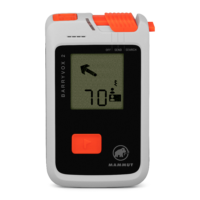
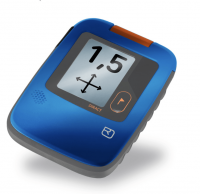
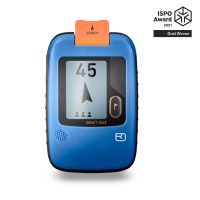
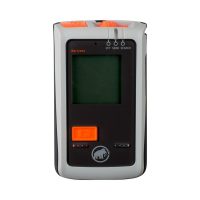
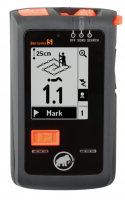
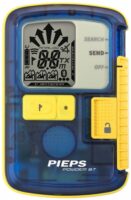
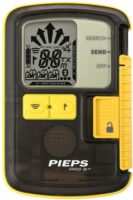
Avalanche transceivers should be worn by all members of a party at all times when skiing in the backcountry. They are used to locate people who have been buried in avalanches. The use of an avalanche transceiver, shovel and probe is a must for all backcountry skiers.
Transceiver work by using electromagnetic signals. The victims transceiver emits a signal which can then be picked up by another transceiver avalanche. The person receiving the signal can then home in on the location the beacon is being transmitted from. With analogue transceivers, this signal will be an audible tone and a visible LED light signal. Digital transceivers will have the technology to home in on the exact distance and direction of the victim.
The original transceivers converted the radio signal into an audible sound that would get louder the closer a person got to the buried victim. Advances have meant that LEDs have been added to analogue transceivers, meaning there is a visible signal as well as an audible one, and earpieces have been fitted allowing the person to better hear the sound.
The technology has been further developed in the digital transceivers, which can use the signal to work out the distance from and direction of the buried transceiver. Digital transceivers are now much easier to use than analogue ones, although their range is often more limited than with analogue transceivers.
Digital transceivers have evolved since their first inception with faster processors, extra antenna to aid in searches and more advanced multiple burial search functions.
Transceiver ski is sold with a special harness or strap to attach to your body. They are typically worn against your chest and must be worn under your jacket against your first layer of clothing. The transceiver must be switched on at all times while skiing which will automatically put it in the ‘send’ mode, so it is constantly emitting a signal.
457,000 Hz (457 kHz) is the standard transmit frequency for avalanche transceivers across the world. All modern avalanche transceivers are compatible with each other — it does not matter if you and your partners have differing brands.
Yes most of the transceivers we supply can be updated, to find out more please check out the Avalanche Transceiver, How to update your beacon Blog
Initially yes you will be covered under warranty if you have registered your beacon, however this will depend on the damages and defects your beacon has at the time of warranty, find out more here.
RECCO is a system used to find people buried under the snow. The recco method comprises two parts: a reflector and a detector. The reflector is built into the clothing (such as boots, jackets, helmet, protective gear) of the skier or snowboarder. The rescue team then has the detector.
The RECCO system DOES NOT replace the use of transceivers. Using the RECCO system requires alerting a rescue team with the correct equipment and awaiting their arrival by which time it could be too late.
The majority of avalanches occur away from the lift systems meaning the rescue services will not be on hand. Time is the most important factor in any avalanche rescue and avalanche transceivers can enable a group to perform their own rescue on the spot.
Analogue transceivers convert the radio signal transmitted into an audible sound and light signal to help locate the whereabouts of the buried transceiver.
Digital transceivers use the radio signal to provide the searcher with a digital distance and direction reading. The latest digital transceivers also have faster processing times and advanced multiple burial functions.
Digital transceivers are generally easier to use but do have a smaller range (typically 40-50m) than analogue transceivers (up to 80m).
The advantage of an extra antenna is in the search mode. Transceivers with 2 antennas show when you need to adjust your position to line up with the flux lines of the transmitting transceiver as you search. The Tracker DTS has arrows that light up to point you in the right direction along the flux lines.
When the middle arrow lights up, both antennas are receiving equal signal strength, and you are along the flux line or the path of the strongest signal. Side arrows light up to point you in the correct direction when one antenna is getting a greater signal than the other.
This makes searching far easier than the grid search pattern given by the single antenna analogue models. Single antenna transceivers, however, do typically have a longer search range.
The newer transceivers now have a third antenna included which is for use in the final phase of the search as you approach close to the victim. The benefit is to eliminate “spikes” — a phenomenon where you receive the shortest distance reading at a point close to but not directly above the victim. By eliminating these ‘spikes’ in the reading, 3-antenna transceivers are the most accurate and reliable on the market.
The third antenna typically comes into play about 2m from the victim and analyses the flux lines in order to lead you to that point directly above the victim — saving valuable time in the search.
Due to the wide choice on offer and a great variety in price, picking the right transceiver can be difficult. Digital transceivers are the best models for those who are new to transceivers, as they are the easiest and quickest to learn how to use.
There are some key considerations to make:
Whatever transceiver you choose you should be very comfortable and familiar with it. It is important to regularly practise with your transceiver as well as in your probing and shovelling techniques.
Please see the short summary of models and ranges below to see the differences.
The Mammut Barryvox and Barryvox S share many features but there are several key reasons why a user might choose the Barryvox S over the classic Barryvox.
The all time classic Mammut Barryvox was designed for simplicity in mind, very capable in both single or multiple burial searches when using the marking function, With a search bandwidth up to 70 metres.
The extremely user-friendly large 2” interface offers simplicity at its best, unfortunately, the Barryvox does not have some of the backgrounds features that the Barrryvox S features. Highly recommended for those who are looking for a smart and simple transceiver or new to off-piste terrain.
The new Mammut Barryvox S has several additional features that the classic Barryvox does not have, with search assistance for beginners and advanced users, the Barryvox S is not just a beacon for professionals.
In digital mode the Barryvox S offers the same search bandwidth as the standard Barryvox at 70 metres, however, the Barryvox S can stretch to a whopping 100 Metres in analogue mode, Very few transceivers on the market can do this.
The Super intuitive Barryvox S offers a larger screen to the standard barryvox, the 2.2” screen makes it easier to see and read, the screen also offers Dynamic screen icons to cue the user through search, helping to keep the search moving.
The Barryvox S offers smart search which operates in the background and allows for efficient follows arrow guidance.
Tracker S, 4 Combined User Manual
Diract and Diract Voice User Manual